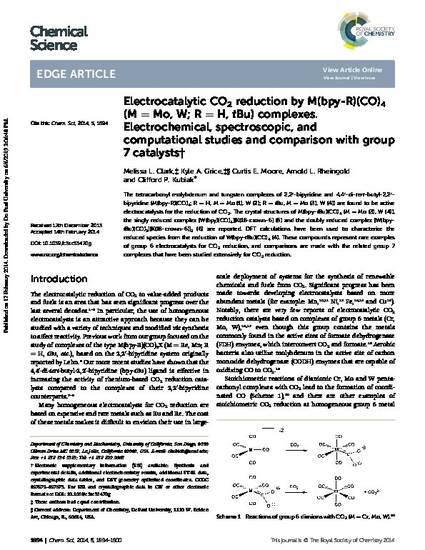
The tetracarbonyl molybdenum and tungsten complexes of 2,2′-bipyridine and 4,4′-di-tert-butyl-2,2′-bipyridine (M(bpy-R)(CO)4; R = H, M = Mo (1), W (2); R = tBu, M = Mo (3), W (4)) are found to be active electrocatalysts for the reduction of CO2. The crystal structures of M(bpy-tBu)(CO)4 (M = Mo (3), W (4)), the singly reduced complex [W(bpy)(CO)4][K(18-crown-6] (5) and the doubly reduced complex [W(bpy-tBu)(CO)3][K(18-crown-6)]2 (6) are reported. DFT calculations have been used to characterize the reduced species from the reduction of W(bpy-tBu)(CO)4 (4). These compounds represent rare examples of group 6 electrocatalysts for CO2 reduction, and comparisons are made with the related group 7 complexes that have been studied extensively for CO2 reduction.

10.1039/C3SC53470G